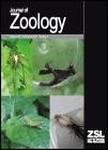版权所有:内蒙古大学图书馆 技术提供:维普资讯• 智图
内蒙古自治区呼和浩特市赛罕区大学西街235号 邮编: 010021

作者机构:Univ Western Australia Sch Human Sci 35 Stirling Highway Crawley WA 6009 Australia Murdoch Univ Perth WA Australia Curtin Univ Perth WA Australia Dept Biodivers Conservat & Attract Perth WA Australia Western Australian Museum Collect & Res Welshpool WA Australia
出 版 物:《JOURNAL OF ZOOLOGY》 (J. Zool.)
年 卷 期:2025年第325卷第4期
页 面:334-349页
核心收录:
学科分类:0710[理学-生物学] 07[理学] 071002[理学-动物学]
基 金:University of Western Australia Western Australian Museum
主 题:Saxicoline rodent Zyzomys argurus genetic structure tropical biogeography islands boom-bust demographics episodic weather events
摘 要:Endemic rodents constitute 19% of Australian terrestrial mammal species and this proportion is higher in arid zones and the north. We report substantial genetic diversity and population structure in the common rock-rat, a saxicoline murid whose range extends across northern Australia and into the continent s interior. Samples of 686 individuals from 68 locations, encompassing the western half of the species range, provide one of the most geographically and numerically extensive genetic studies of an Australian rodent. The Great Sandy Desert, a prominent feature over the last 0.5 my bp acts as a significant barrier to gene flow. Continental islands, formed during the past 10 000 years following the end of the most recent Pleistocene glacial maximum, have populations with lower heterozygosity and marked differentiation from each other and the adjacent mainland. On the mainland, despite considerable differentiation between locations, there is only weak evidence for isolation by distance and where it occurs it is associated with drainage basins. In the Pilbara, analyses of genetic structure within localized sub-locations, just a few kilometres apart, indicate considerable variation between them (FST) and inbreeding within (FIS). We interpret this in the context of cyclonic and other extreme rainfall events that occur episodically, leading to boom-bust population cycles. Populations decline into refugia of isolated rock patches during extended periods of poor resources with consequent low genetic diversity (He) and large differentiation from others. Populations that irrupt after major episodic rainfall increases resource states, have a more extensive distribution with greater heterozygosity because of gene flow between previously isolated refugia and less differentiation between the locations. These observations have conservation significance for threatened congeneric species and other Australian arid rodents by demonstrating, in this common exemplar, the reduced evolut